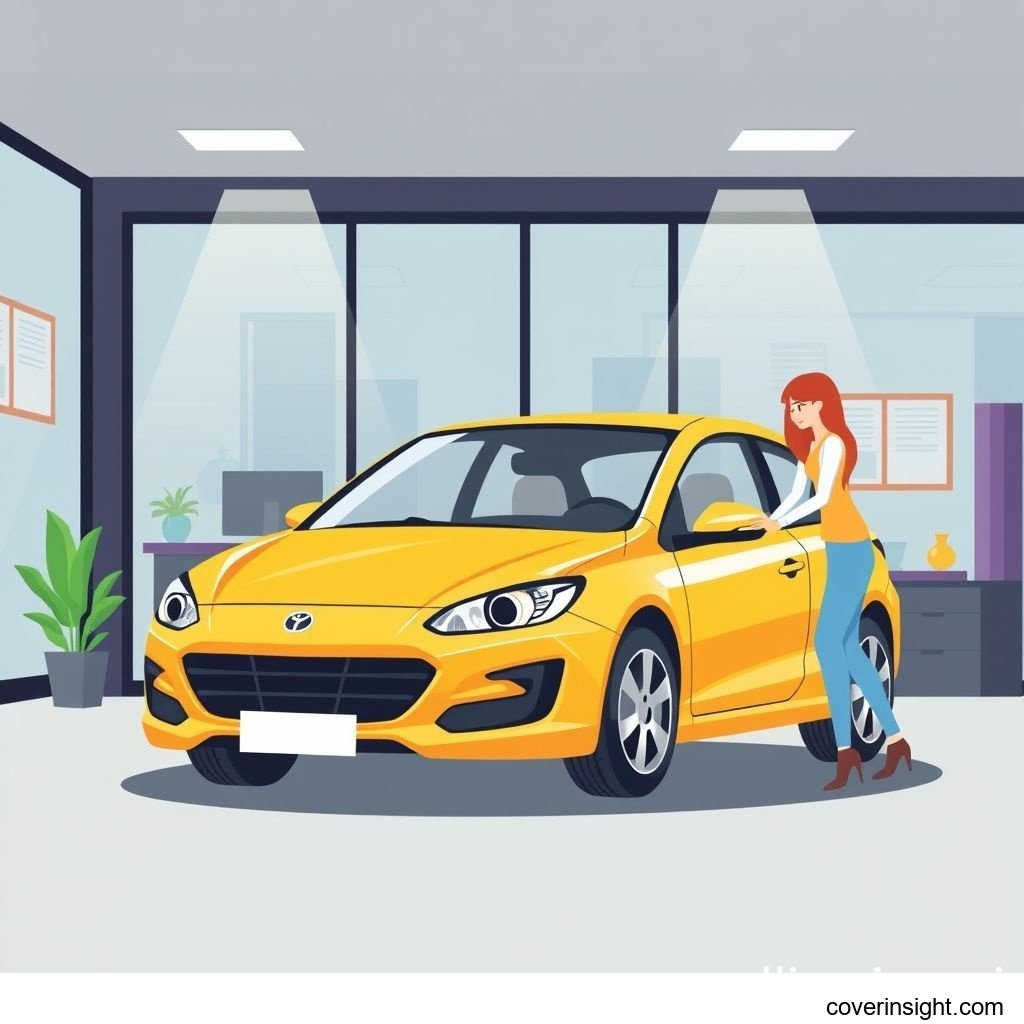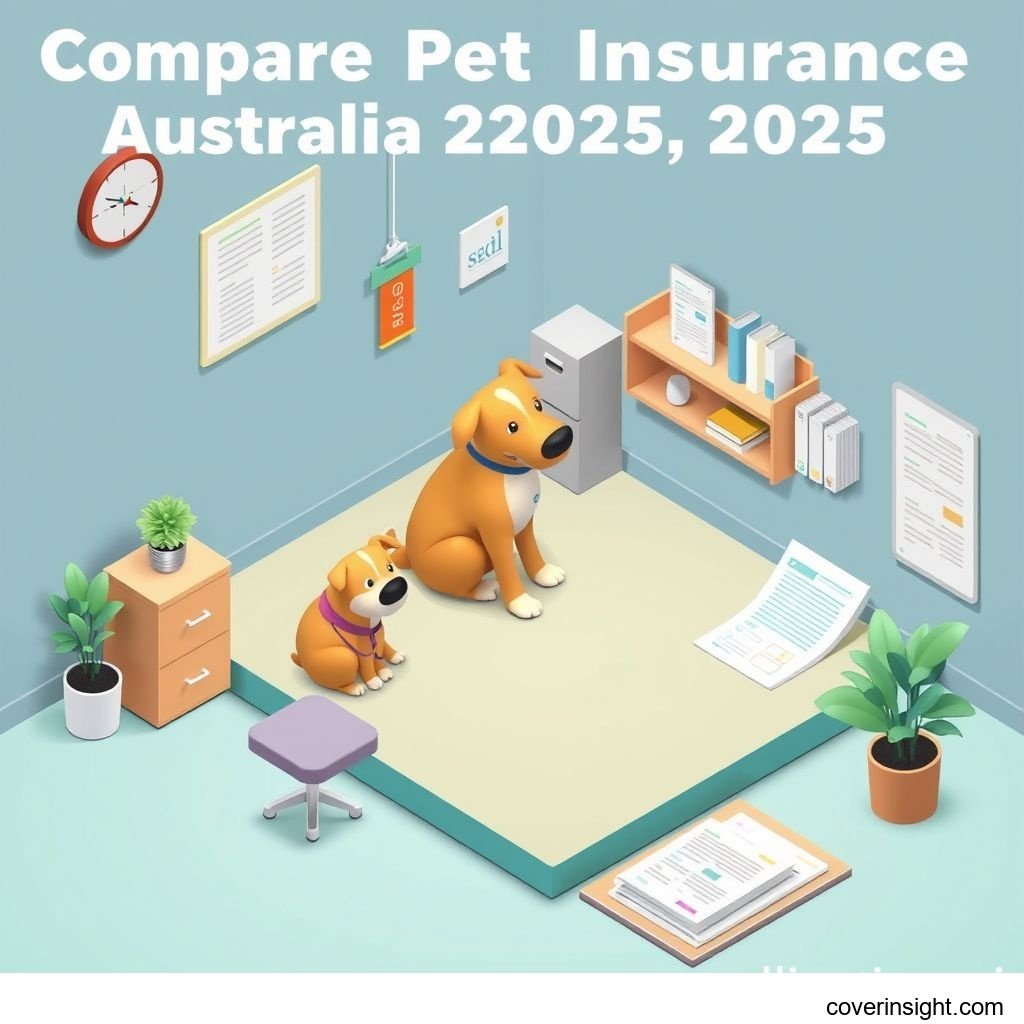Smart Ways to Compare Car Insurance in AU 2025
Introduction: Why Compare Car Insurance Australia in 2025
As we navigate 2025, the landscape of car insurance in Australia continues to evolve, making it more crucial than ever to carefully compare car insurance Australia. With fluctuating economic conditions, changes in driving habits, and the introduction of new policy features, securing the right car insurance isn't just about ticking a box – it's about protecting a significant asset and ensuring peace of mind. This comprehensive guide will walk you through smart strategies to compare car insurance Australia effectively, helping you find a policy that offers both robust coverage and excellent value. Understanding the nuances of the Australian insurance market will empower you to make an informed decision, ensuring you're well-covered for the year ahead.
Understanding Core Coverage When You Compare Car Insurance Australia
Before diving into quotes, it's essential to understand the different types of car insurance available. Knowing what each policy covers will allow you to intelligently compare car insurance Australia options and determine which best fits your needs and budget.
Types of Car Insurance Policies in AU
In Australia, car insurance typically falls into a few main categories:
-
Compulsory Third Party (CTP) Insurance: Also known as 'Green Slip' in some states, CTP is mandatory in Australia. It covers compensation for people injured or killed in an accident where your vehicle is at fault. It does not cover damage to vehicles or property.
-
Third Party Property Damage (TPPD) Insurance: This type of policy covers damage to other people's property (like their car or fence) if you're at fault in an accident. It doesn't cover damage to your own vehicle. Some TPPD policies also offer limited cover for damage to your car caused by an uninsured driver.
-
Third Party Fire & Theft (TPF&T) Insurance: Building on TPPD, this policy adds cover for damage to your own vehicle if it's stolen or catches fire. Like TPPD, it does not cover damage to your car from an at-fault accident.
-
Comprehensive Car Insurance: This is the highest level of cover. It includes everything from TPPD, Fire & Theft, plus cover for damage to your own vehicle, regardless of fault. Comprehensive policies often include additional benefits such as:
-
Damage to your vehicle from hail, storm, flood, or fire.
-
Theft or attempted theft of your vehicle.
-
Accidental damage to your vehicle.
-
Damage to other people's property.
-
New car replacement (for qualifying vehicles).
-
Hire car after an accident or theft.
-
Towing and storage costs.
-
What’s Typically Included in Comprehensive Cover
When you compare car insurance Australia, comprehensive policies are often the benchmark due to their extensive inclusions. While specifics vary between insurers, here's a general list of what to expect:
-
Accidental Damage: Covers damage to your car from collisions, rollovers, or impact.
-
Fire & Theft: Protection if your car is stolen or damaged by fire.
-
Storm & Hail Damage: Critical in Australia due to its unpredictable weather patterns.
-
Vandalism: Covers malicious damage to your vehicle.
-
Towing & Storage: Costs associated with moving and keeping your damaged car.
-
Liability to Third Parties: Covers damage you cause to other people's property or vehicles.
-
Hire Car Options: Often an optional extra, providing a rental car while yours is being repaired or after it's stolen.
-
Emergency Accommodation: If an accident leaves you stranded far from home.
Common Policy Exclusions to Look Out For
Even comprehensive policies have limitations. Understanding these exclusions is crucial when you compare car insurance Australia to avoid surprises later. Common exclusions include:
-
Unlicensed Driving: If the driver at the time of the incident was unlicensed or disqualified.
-
Driving Under Influence (DUI): Accidents occurring while the driver is under the influence of alcohol or drugs.
-
Racing or Illegal Activity: Damage sustained during races, rallies, or any illegal activity.
-
Unroadworthy Vehicle: If the vehicle was not in a roadworthy condition at the time of the incident.
-
Unattended Keys: If your car is stolen because you left the keys unattended or easily accessible.
-
Wear and Tear: Damage due to normal aging or lack of maintenance.
-
Consequential Loss: Indirect losses not directly related to the insured event, like loss of income.
Key Factors Influencing Cost and How to Compare Car Insurance Australia Effectively
The price you pay for car insurance is influenced by a multitude of factors. When you compare car insurance Australia, understanding these elements can help you identify why premiums differ and how you might reduce yours.
Price Factors That Drive Premiums
Insurers assess risk based on various data points. Key factors impacting your car insurance premiums include:
-
Driver Demographics:
-
Age and Experience: Younger, less experienced drivers generally face higher premiums.
-
Gender: Historically, gender could play a role, but this is less common now, with focus shifting to driving history.
-
Driving History: A clean record with no claims or infringements leads to lower premiums.
-
-
Vehicle Details:
-
Make, Model & Year: High-performance, luxury, or frequently stolen cars typically cost more to insure.
-
Vehicle Value: More expensive cars cost more to repair or replace.
-
Modifications: Aftermarket modifications can increase premiums, especially if they enhance performance or make the car more desirable to thieves.
-
-
Location:
-
Address: Areas with higher crime rates (theft, vandalism) or a greater incidence of accidents will incur higher premiums.
-
Garaging: Whether your car is parked securely overnight (e.g., in a locked garage) can reduce your premium.
-
-
Usage:
-
Annual Kilometres: The more you drive, the higher the risk of an accident, leading to higher premiums.
-
Purpose: Personal use is usually cheaper than business use.
-
-
Excess Chosen: A higher voluntary excess (the amount you pay towards a claim) generally leads to a lower premium.
-
No Claims Bonus (NCB) / Rating One: A discount applied for each year you go without making a claim, significantly reducing premiums over time.
Strategies for Utilising Comparison Tools
In 2025, online comparison websites are indispensable tools to compare car insurance Australia. They allow you to get multiple quotes by entering your details once. Here's how to maximise their effectiveness:
-
Be Accurate and Consistent: Provide precise details about yourself, your vehicle, and your driving history. Inconsistencies can lead to invalid quotes or issues later.
-
Compare Like for Like: Ensure you're comparing policies with similar levels of cover (e.g., comprehensive to comprehensive), excess amounts, and included benefits. A cheaper premium might mean less coverage.
-
Check Insurer Reviews: Don't just look at the price. Research the insurer's reputation for customer service and claims handling. A low price is worthless if the claims process is a nightmare.
-
Look Beyond the First Page: While comparison sites are great, they don't always include every insurer. Some insurers, particularly direct ones, may not list their products. It's worth checking a few individual insurer sites as well.
-
Image Alt Text Tip: When uploading photos of your vehicle for a quote, consider using alt text like "Front view of car for compare car insurance Australia quote" for accessibility and SEO. Similarly, for your driver's license: "Driver's license details for compare car insurance Australia application."
The Importance of the Product Disclosure Statement (PDS)
Every insurance policy in Australia comes with a Product Disclosure Statement (PDS). This document is your comprehensive guide to what is and isn't covered. When you compare car insurance Australia, never skip reading the PDS. It details:
-
Specific Inclusions and Exclusions: Go beyond the summary to understand the precise conditions for cover.
-
Policy Limits: Understand the maximum payout for certain claims, like unrecoverable theft or emergency towing.
-
Excess Options: Clearly outlines mandatory and voluntary excess amounts.
-
Claims Process: Explains how to make a claim, what documentation is required, and the expected timeframe.
-
Cooling-Off Period: The time you have to change your mind after purchasing a policy.
-
Dispute Resolution: How to escalate an issue if you're unhappy with a decision.
Reading the PDS ensures you fully grasp what you're buying. For general information about consumer rights regarding financial products, consider visiting the Australian Prudential Regulation Authority or the Insurance Council of Australia for industry insights.
Smart Ways to Save When You Compare Car Insurance Australia
Reducing your car insurance premium doesn't mean sacrificing essential coverage. There are several smart strategies you can employ when you compare car insurance Australia to get a better deal.
Actionable Saving Tips for Lower Premiums
Implementing these tips can significantly reduce your annual outlay:
-
Increase Your Excess: Opting for a higher voluntary excess means you pay more out-of-pocket if you claim, but your annual premium will be lower. Ensure it's an amount you can comfortably afford.
-
Pay Annually: Most insurers offer a discount for paying your premium in one lump sum rather than monthly instalments. This can save you a percentage on your overall cost.
-
Maintain a Good Driving Record: A clean claims history and no traffic infringements will earn you a No Claims Bonus (NCB) or Rating One, one of the biggest discounts available.
-
Limit Drivers: If possible, restrict the number of nominated drivers on your policy. Insuring only experienced drivers can reduce risk and premiums.
-
Garage Your Car: Parking your car in a secure, locked garage or carport overnight reduces the risk of theft or damage, potentially lowering your premium.
-
Choose a Lower Agreed Value: If you have comprehensive cover, you can often choose an 'agreed value' for your car rather than market value. A lower agreed value means a lower payout if your car is written off, but also a lower premium.
-
Utilise Discounts: Always ask insurers about available discounts. These can include:
-
Online purchase discounts.
-
Multi-policy discounts (insuring home and car with the same provider).
-
Loyalty discounts.
-
Low kilometre discounts for drivers who don't drive much.
-
-
Review Your Policy Annually: Don't just auto-renew. Each year, take the time to compare car insurance Australia again. Your circumstances or the market might have changed, and a better deal could be available.
Leveraging Multi-Car Discounts and Bundling
Many Australian insurers offer incentives if you insure multiple vehicles or bundle different insurance types (like home and contents insurance with car insurance). These multi-car discounts are a fantastic way to save.
-
Multi-Car Discounts: If you have two or more cars in your household, inquire about multi-car discounts. Insurers often provide a percentage off each policy when they are held with the same provider. This simplifies management and usually results in savings.
-
Bundling Policies: Consider getting your home, contents, and car insurance from the same provider. This strategy often unlocks significant bundling discounts. Always calculate if the combined discount outweighs potential savings from having separate policies with different providers. This is a crucial consideration when you compare car insurance Australia options.
Understanding Your Excess and Voluntary Excess
When you compare car insurance Australia, the excess is a critical component. It's the amount you pay out-of-pocket when you make a claim.
-
Standard Excess: The base amount you always pay when making a claim.
-
Voluntary Excess: An additional amount you choose to pay on top of your standard excess. By choosing a higher voluntary excess, you signal to the insurer that you're willing to take on more risk, which results in a lower premium. It's a balance: saving money on premiums versus having a larger out-of-pocket expense if you need to claim. Ensure any chosen excess amount is manageable for you financially.
Beyond the Quote: What Else Matters When You Compare Car Insurance Australia
While cost is a significant factor, it shouldn't be the only one. When you compare car insurance Australia, delve deeper into aspects like insurer reliability and claims handling.
Assessing Insurer Reputation and Claims Service
A cheap premium means little if the insurer proves unreliable when you need them most. Focus on:
-
Customer Reviews: Look at independent review sites and consumer forums for feedback on specific insurers. Pay attention to comments about the claims process, responsiveness, and customer service.
-
Claims Handling Efficiency: How quickly and fairly does the insurer process claims? Are they easy to communicate with? This is paramount during a stressful time.
-
Financial Strength: While less common for major Australian insurers, ensuring your chosen provider is financially stable can offer greater peace of mind. APRA (Australian Prudential Regulation Authority) oversees financial institutions in Australia.
-
Policy Inclusions: Beyond the basic levels, check for beneficial extras that might be included or available:
-
Roadside assistance.
-
No-claims bonus protection.
-
Agreed vs. Market value options.
-
New car replacement (if applicable).
-
Choice of repairer.
-
Navigating At-Fault Accident Coverage
Understanding your at-fault accident coverage is vital, especially with comprehensive policies. If you are determined to be at fault in an accident, your comprehensive car insurance covers the damage to your own vehicle, as well as the damage you caused to other people's property.
-
Impact on Premium: Making an at-fault accident coverage claim will likely affect your no-claims bonus and could increase your premium at renewal.
-
Excess Application: Your excess (standard + voluntary) will apply to the claim for damage to your vehicle.
-
Driving History: A history of at-fault accident coverage claims is a major risk indicator for insurers, leading to higher future premiums. Always drive carefully to minimise this risk.
-
Uninsured Drivers: While your at-fault accident coverage covers damage to your car if you're at fault, some comprehensive policies also offer cover for damage to your car caused by an uninsured driver, provided you can identify them. This is a valuable feature to look for.
Customer Service and Support
Good customer service can significantly improve your insurance experience. Consider:
-
Availability: Are they accessible via phone, email, chat, or in-person branches? What are their operating hours?
-
Digital Tools: Do they offer a user-friendly app for managing your policy, making claims, or accessing documents?
-
Communication: How well do they communicate during the claims process or when answering queries?
Accessing relevant information and support is key to a smooth experience, so factor this in when you compare car insurance Australia. For more general Australian insurance resources, you can refer to Insurance Resources Global. For specific AU information, explore AU Insurance Home.
FAQs About Comparing Car Insurance in Australia
When you compare car insurance Australia, many common questions arise. Here are answers to some of the most frequently asked:
-
How much does compare car insurance Australia cost?
The cost of car insurance in Australia varies significantly. It can range from a few hundred dollars to several thousand per year, depending on factors like your age, driving history, car make and model, location, chosen excess, and the level of cover. The best way to know is to get multiple quotes.
-
What affects premiums?
Premiums are affected by numerous factors including the driver's age and experience, driving record (claims history, infringements), car type and value, where the car is garaged, the policyholder's address, annual kilometres driven, the chosen excess, and whether you're eligible for multi-car discounts or other loyalty programs. At-fault accident coverage claims history is a significant factor.
-
Is it mandatory?
Yes, Compulsory Third Party (CTP) insurance is mandatory in all Australian states and territories. This covers injuries to other people caused by your vehicle. However, insurance for damage to vehicles or property (Third Party Property Damage, Fire & Theft, or Comprehensive) is not mandatory, though highly recommended.
-
How to choose the best car insurance?
The "best" car insurance depends on your individual needs. To choose, first assess your budget and the level of risk you're comfortable with. Then, compare car insurance Australia using online tools, focusing on similar coverage levels, reading the PDS, checking insurer reputations, and considering inclusions like at-fault accident coverage and multi-car discounts.
-
What are the consequences of no coverage (beyond CTP)?
If you only have CTP and are involved in an accident where you are at fault, you would be personally liable for all damages to other vehicles and property. This could amount to tens of thousands of dollars, potentially leading to severe financial hardship or even bankruptcy. It’s a significant risk to take.






Comments